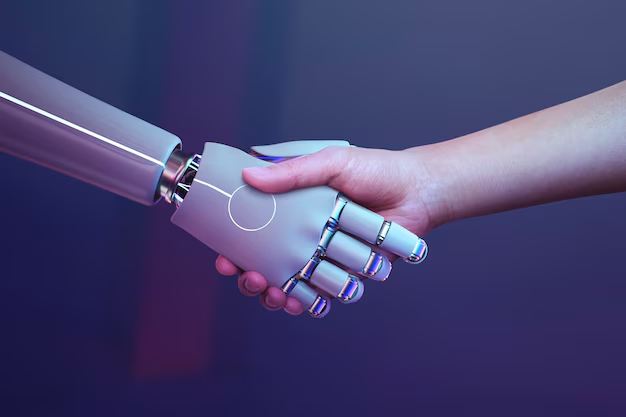“Exploring the Power of AI: Applications, Challenges, and Opportunities” is a topic that delves into how artificial intelligence (AI) is transforming industries, reshaping everyday life, and opening up new frontiers for human progress. As AI continues to evolve, its capabilities grow, offering vast opportunities while also presenting unique challenges. Here’s an in-depth look at the applications, challenges, and opportunities of AI:
1. Applications of AI Across Industries
Healthcare
- Diagnostics: AI is revolutionizing healthcare by enabling more accurate diagnostics. Machine learning algorithms can analyze medical images (e.g., X-rays, MRIs) to detect diseases such as cancer, heart conditions, and neurological disorders with remarkable accuracy.
- Personalized Medicine: AI-driven platforms are analyzing genetic data to create personalized treatment plans. AI also helps predict disease outbreaks by identifying patterns in large datasets.
- Virtual Health Assistants: AI-powered chatbots and virtual assistants are helping with patient management, providing advice on symptoms, reminders for medication, and offering mental health support.
Finance
- Algorithmic Trading: AI is used in finance for high-frequency trading, making split-second decisions based on large sets of data to maximize returns.
- Fraud Detection: AI systems help banks and financial institutions detect unusual patterns in transactions, enabling the identification of potential fraud in real time.
- Customer Service: AI chatbots and virtual assistants help customers manage accounts, answer inquiries, and provide tailored financial advice, improving customer experiences.
Transportation
- Autonomous Vehicles: Self-driving cars, trucks, and drones are being developed to reduce human error, improve safety, and streamline transportation. AI algorithms process data from sensors and cameras to navigate roads or deliver goods autonomously.
- Traffic Management: AI helps optimize traffic flow in cities through predictive models and real-time data, reducing congestion and improving public transportation schedules.
- Route Optimization: AI-powered applications help logistics companies identify the most efficient routes for deliveries, reducing fuel consumption and travel time.
Retail and E-Commerce
- Personalized Recommendations: AI is used to analyze purchasing behavior and recommend products tailored to individual customers, improving sales and user experience.
- Inventory Management: AI-powered systems forecast demand, helping retailers optimize inventory and supply chain management, reducing waste and improving efficiency.
- Customer Support: AI chatbots provide real-time customer service, handling everything from order inquiries to returns and complaints.
Manufacturing
- Predictive Maintenance: AI helps manufacturers anticipate equipment failures before they happen by analyzing data from machines and sensors, reducing downtime and repair costs.
- Robotic Automation: AI-driven robots are being used in production lines to perform tasks ranging from assembly to packaging with high precision and efficiency.
- Quality Control: AI systems monitor the production process, identifying defects or inconsistencies in real time to maintain product quality and reduce errors.
Entertainment and Media
- Content Creation: AI is being used to create music, art, and even write stories. Tools like AI-powered video editors or generative design software create compelling content with minimal human input.
- Recommendation Engines: Streaming services like Netflix and Spotify use AI to recommend shows, movies, and music based on user preferences and viewing habits.
- Gaming: AI enhances gaming experiences by providing dynamic and responsive non-playable characters (NPCs), generating new game environments, and creating challenging gameplay experiences.
2. Challenges of AI
Ethical Concerns
- Bias and Discrimination: AI algorithms are only as unbiased as the data they’re trained on. If AI systems are trained on biased datasets, they can perpetuate and even amplify societal biases, leading to unfair outcomes in fields like hiring, lending, and law enforcement.
- Privacy: AI’s ability to collect and analyze vast amounts of personal data raises concerns about privacy. The use of AI in surveillance and data tracking could infringe on individual rights and freedoms.
- Autonomy and Accountability: As AI systems become more autonomous, determining responsibility for mistakes becomes increasingly complex. Who is accountable if an AI-driven car crashes, or if an algorithm makes a discriminatory hiring decision?
Job Displacement and Economic Inequality
- Automation of Jobs: One of the biggest challenges is the potential displacement of workers due to automation. AI and robotics can replace repetitive and manual labor, leading to job losses in industries like manufacturing, retail, and transportation.
- Skill Gaps: The rapid rise of AI may outpace the ability of workers to adapt. Many existing jobs may require reskilling or upskilling, which could create a widening gap between high- and low-skilled workers.
Security Risks
- AI-Driven Cyberattacks: While AI is being used to strengthen cybersecurity, it can also be exploited by malicious actors to conduct sophisticated cyberattacks. AI could be used to automate the identification of vulnerabilities in systems or launch phishing attacks at scale.
- Weaponization of AI: There is growing concern about the use of AI in military applications, such as autonomous weapons, drones, and surveillance systems, which could alter the nature of warfare and international relations.
AI Regulation and Governance
- Lack of Regulation: There is a need for clear guidelines and frameworks for the ethical use of AI. Currently, there is no unified approach to regulating AI across the globe, leading to inconsistencies and the potential for misuse.
- Transparency: Many AI systems, especially deep learning models, operate as “black boxes,” making it difficult to understand how decisions are being made. Ensuring transparency in AI decision-making is critical for trust and accountability.
3. Opportunities of AI
Advancing Healthcare
- Improved Diagnostics: AI can enable earlier detection of diseases and conditions, improving health outcomes. With the ability to analyze large datasets, AI can identify patterns in health data that humans might miss.
- Global Health Equity: AI-powered tools can help democratize access to healthcare by providing affordable and accurate diagnostics in underserved regions or remote areas.
Enhanced Creativity and Innovation
- AI as a Creative Partner: Rather than replacing human creativity, AI can be used as a tool to enhance it. AI-driven tools help artists, musicians, writers, and designers create new forms of expression by offering inspiration, optimizing workflows, or generating novel ideas.
- Research and Development: AI can accelerate the pace of scientific discovery by helping researchers analyze data faster and predict potential outcomes. This can be especially impactful in fields like drug discovery, climate change, and renewable energy.
Improving Efficiency and Productivity
- Optimizing Processes: AI can optimize business processes, from supply chains to customer service, improving efficiency and cutting costs. AI can identify inefficiencies and suggest improvements that might not be obvious to human managers.
- Energy Efficiency: AI can optimize energy use in everything from smart homes to industrial plants, reducing waste and helping companies lower their carbon footprints.
AI-Powered Sustainability
- Climate Change Mitigation: AI models can be used to predict climate patterns, track emissions, and optimize energy usage, playing a key role in sustainability efforts.
- Agriculture: AI applications in agriculture, such as precision farming, can help optimize crop yields while minimizing environmental impact, contributing to food security and sustainable farming practices.
Human-AI Collaboration
- Augmenting Human Intelligence: Instead of replacing humans, AI has the potential to augment human capabilities. AI systems can handle repetitive tasks, giving humans more time for creative, strategic, and emotional decision-making.
- Assistive Technologies: AI-powered tools for people with disabilities are rapidly improving, enabling greater independence and improving quality of life. Examples include AI-driven hearing aids, visual assistance tools, and voice-controlled devices.
Conclusion
AI is undeniably one of the most transformative technologies of our time, with the potential to revolutionize industries, improve lives, and address some of humanity’s most pressing challenges. However, it also presents significant ethical, economic, and security challenges that need to be carefully managed. Balancing the power of AI with responsible governance, ethical considerations, and a focus on social impact will be key to harnessing its full potential in the coming years.

